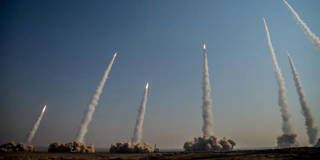OnPoint Subscriber Exclusive
Longer Reads provide in-depth analysis of the ideas and forces shaping politics, economics, international affairs, and more.

Israel's Nuclear Option Against Iran
The longer that US nuclear negotiations with Iran remain stalled, the more Iranian centrifuges will continue to spin, adding to the pressure on Israel to take matters into its own hands. Lacking good options, its only viable strategy may be to play the card that it has had up its sleeve for decades.
LOS ANGELES – “George, I am asking you to bomb the plant.” Fourteen years have passed since Israeli Prime Minister Ehud Olmert called upon US President George W. Bush to attack Al Kibar, a suspected nuclear reactor for military purposes that Israeli intelligence had discovered in the remote Deir al-Zour region of northeast Syria.